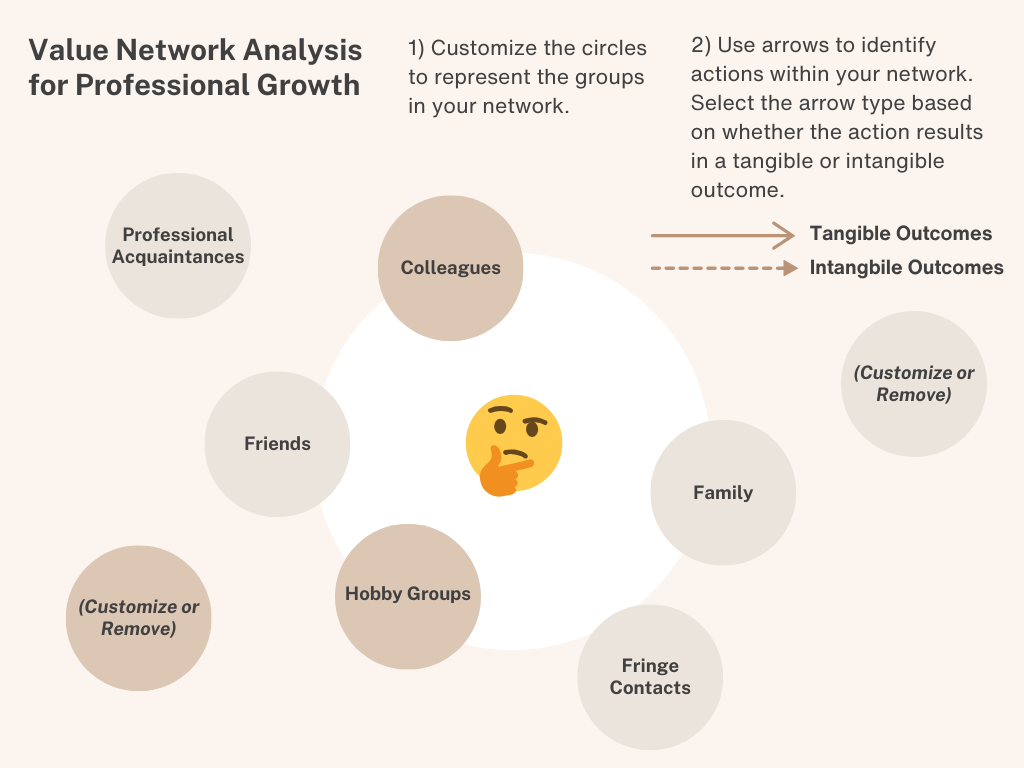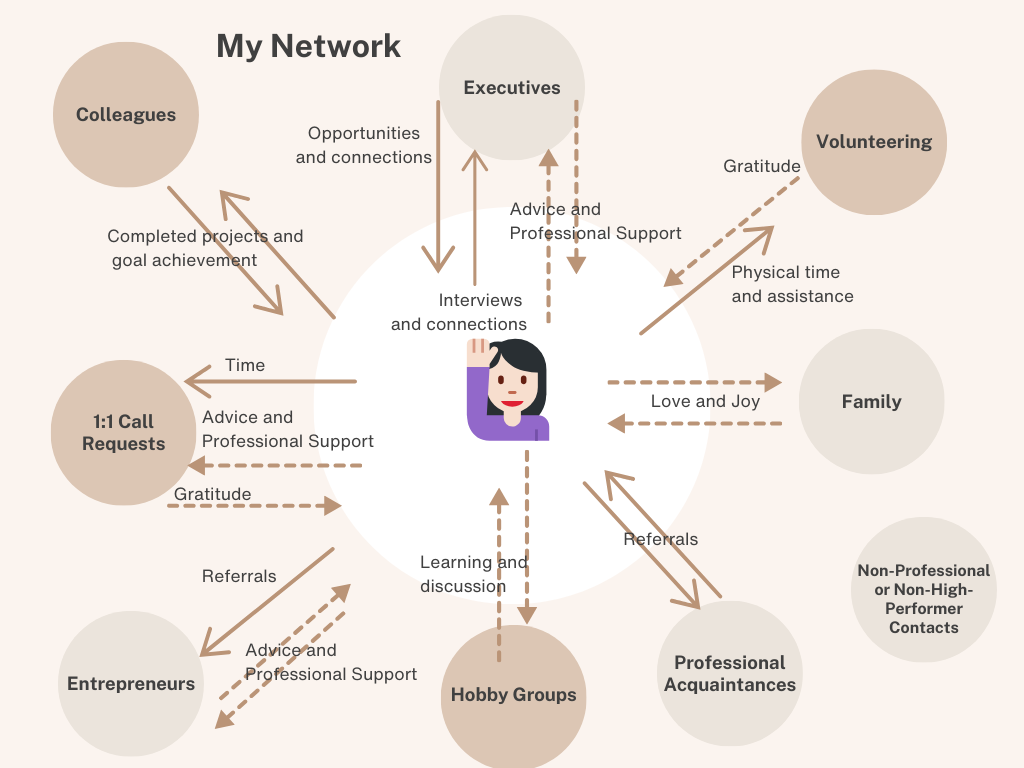Who Should Be In Your Inner Circle?
Feel like you’re always giving but never receiving anything back from people
Wondering who you should spend more (or less) time with?
Want to understand how you can provide value for the people in your network?
This article explores a tool that helps you to understand who gives and receives value in your network, both personally and professionally. By using this method, you can build stronger, more mutually beneficial relationships.
Sign up here to get new articles delivered straight to your inbox!
I must admit I felt nervous when I began writing this article for fear it could be interpreted as ‘thinking of people like chess pieces in your professional journey,’ however, I fully believe this tool can and should only be used with a mutually beneficial mindset.
So what's the tool?
Value Network Analysis (VNA) is a tool used in large corporations. Though it's not typically associated with personal use, it can be incredibly useful. VNA enables you to visualize your network and strategically enhance or customize your relationship building efforts.
By looking at our own networks through the VNA lens, we can find new ways to give and receive value, helping us to grow and find new opportunities.
Let’s quickly explain Value Network Analysis (VNA).
In 2008, Verna Allee published 'Value Network Analysis and Value Conversion of Tangible and Intangible Assets' in the Journal of Intellectual Capital [1]. She explained that understanding the value of intangible assets, such as knowledge, relationships, and skills, can be challenging because they are not physical like machinery or money. Yet, we know they are very important. That’s where Value Network Analysis (VNA) comes in and provides a visualization of both the tangible and intangible assets in a business. VNA also helps us understand how assets flow and transform into different forms of value through relationships and interactions. Ultimately, by identifying all the assets within a network, VNA enables us to manage and leverage these assets more effectively.
So what are the advantages of applying VNA to our own professional networks?
Here’s a few ways you can benefit:
Explore Your Professional Ecosystem: Get an overview of your entire network by visualizing the components and channels within your professional ecosystem. This allows you to quickly identify areas where you can diversify.
Optimize Your Networking Strategy: Learn how to strategically position yourself within your professional circles by identifying areas where you're exerting too much or too little effort.
Maximize Your Impact: Evaluate the effectiveness of your interactions by determining which outputs have provided the most return on your time investment. Additionally, identify where and how your input is most in demand by others.
Strategize Your Professional Growth: Understand the dynamics of your professional relationships so you can leverage them for career advancement by strategically planning your next moves.
Create a VNA in just 3 steps:
Grab a piece of paper or use an online tool like Canva.
Create a circle for every group in your network (ex: colleagues, friends, hobby groups, family, etc.)
Draw arrows between yourself and each group to represent the actions that occur between you and those groups. Use a solid arrow for actions that result in a tangible outcome (ex: a completed project, payment, or new business referral). Use a dotted arrow for actions that have an intangible outcome, (ex: sharing insights, expressing gratitude, or showing love).
Here’s what steps 1 and 2 could look like:
An example of setting up a VNA for your professional network
To provide a complete example, here is the VNA I created for my own network:
The VNA for my professional network
What I learned from my VNA:
There’s an opportunity for me to provide professional advice and support to my volunteering and hobby groups, and by providing that additional value to them, they may have professional opportunities for me.
A reminder that I enjoy working in teams or in a fractional way, since it’s a mutually beneficial relationship.
1:1 calls (someone is requesting my advice) take up a lot of my time and output, and while I highly enjoy them, I have to limit them so they don’t overwhelm my schedule.
Non-professional or non-high-performer contacts: They may not provide professional input, but that's ok! They are lovely humans, and there's value in leisure and socializing. However, this serves as a reminder that if I wanted to enhance my professional network, investing time with non-professional contacts might not be the most effective use of my time.
Examples of how you can leverage VNA:
Identify Your Role and What You Can Do: Understand your skills and knowledge and see how you can use them within your network. For example, if you're good at digital marketing, you could give workshops to one of your groups where there’s opportunity to provide more value.
Check the Balance in Your Relationships: Evaluate the ‘give and take’ in your relationships. Are you only giving without getting anything in return? Try to find exchanges that benefit both sides, like proactively offering support to the colleagues that help you out often.
Improve Your Network: Look at your connections. You can diversify by connecting with new professional groups, or reaching out to people in related fields.
Use Your Role to Create Value: Use your established role within your network. If you're known as a connector, consider organizing networking events to help your contacts make new valuable connections.
Keep Learning and Adding Value: Stay up-to-date by always learning and sharing this knowledge within your network. This not only makes you more valuable but also helps your professional community.
Closing Thoughts
By using VNA to evaluate our professional networks, we gain insights into what to focus on, based on what has been most impactful so far, and where we can add more value to others.
This two-fold approach of recognizing impact and providing value is representative of the reciprocal relationships we want from our network. Relationships where we receive immense value from our interactions, and the other person receives something of value from us in return whether that’s advice, support, referrals, knowledge, connections, a tangible resource, or otherwise.
References
Allee, V. (2008). Value network analysis and value conversion of tangible and intangible assets. Journal of intellectual capital, 9(1), 5-24.

